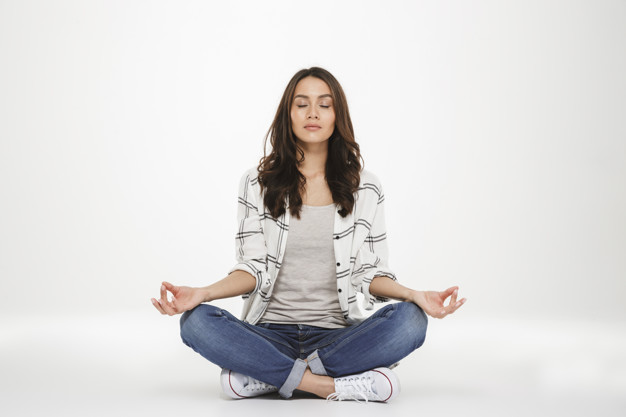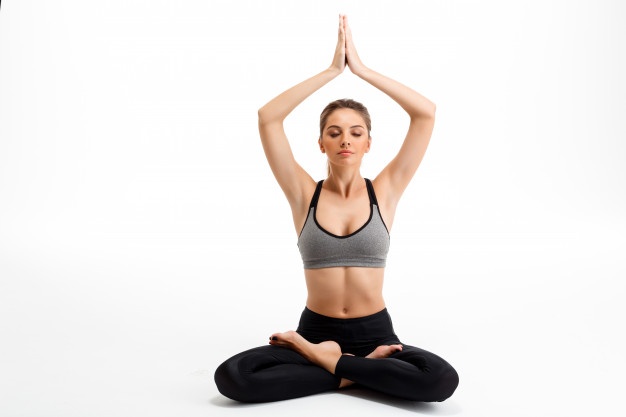Yoga
Improve your balance and flexibility while alleviating muscle pain, anxiety, depression, and stress. Your instructor will listen and customize your experience for your goals.

A yoga therapist can work with patients and put together individualized plans that work together with their medical and surgical therapies. That way, yoga can support the healing process and help the person experience symptoms with more centeredness and less distress.
Benefits Of Yoga
- Yoga improves strength, balance and flexibility.
- Yoga helps with back pain relief.
- Yoga benefits heart health.
- Yoga can mean more energy and brighter moods.
- Yoga relaxes you, to help you sleep better.
- Yoga helps you manage stress.
- Yoga can builds muscle strength.
- Yoga helps in lowering blood sugar.

Diffrent Types Of Yoga:
- Vinyasa yoga.
- Hatha yoga.
- Iyengar yoga.
- Kundalini yoga.
- Ashtanga yoga.
- Bikram yoga.
- Yin yoga.
- Restorative yoga.



Yoga is an old discipline from India. It is both spiritual and physical. Yoga uses breathing techniques, exercise and meditation. It helps to improve health and happiness. … He defined yoga as “the cessation of the modification of the mind”
The art of practicing yoga helps in controlling an individual’s mind, body and soul. It brings together physical and mental disciplines to achieve a peaceful body and mind; it helps manage stress and anxiety and keeps you relaxing. It also helps in increasing flexibility, muscle strength and body tone
Yoga is a mind and body practice. Various styles of yoga combine physical postures, breathing techniques, and meditation or relaxation. … It involves movement, meditation, and breathing techniques to promote mental and physical well-being. There are several types of yoga and many disciplines within the practice.
Yoga improves strength, balance and flexibility. Slow movements and deep breathing increase blood flow and warm up muscles, while holding a pose can build strength. Balance on one foot, while holding the other foot to your calf or above the knee (but never on the knee) at a right angle.
Yes. Yoga classes are generally safe. However, attend one or two trial sessions before making the decision. It is appropriate to ask the teacher how many years of teaching experience he or she has.
Svasthay setu is amongst the best in-home medical care providers in Gujarat. You can get the best support services at the comfort of your home and be safe.The svasthay setu attentiattention of a private lesson will deepen your understanding of how to use yoga so that your practice is truly healing and nurturing.
If you are a beginner, private lessons will also help to prepare you for group classes.Private lessons can be structured various ways. I can plan the lesson around any questions you may have.
In a private lesson we can focus on a specific category of poses: Restorative Poses, Standing Poses, Forward Bends, Back Bends, Twists, Inverted Poses, Lying Down Poses, Hip Openers, etc.
Q1: How is yoga different from meditation?
A1: Meditation (dhyana) is a part of total yoga practice. Yoga is composed of eight basic principles.
- 1. Rules for living in society
- 2. Self-restraining rules
- 3. Low physical impact postures
- 4. Breathing techniques
- 5. Detachment of the mind from senses
- 6. Concentration
- 7. Meditation
- 8. Complete union with super consciousness
Q2: How often and for how long should I do the asanas?
A2: In the beginning, try to do it three times a week, each session lasting for about 45 minutes. After some practice, increase it to five times a week, for an hour each time.
Q3: Can I do the asanas by myself with the help of a yoga book?
A3: Yes, but this is not recommended. Although the DVDs and book illustrations on yoga seem pretty obvious, it is strongly recommended to learn the asanas under the guidance of a teacher. The postures may cause serious damage to the body if performed incorrectly. One must be aware of one’s body’s signals in attempting the poster . If the posture is difficult, it should not be forced.
Q4: Do I need special equipment for yoga practice?
A4: Hardly. All you need is a nonslip yoga mat that is long enough to lay fully stretched on your back.
Q5: What is the minimum age to start yoga?
A5: An infant is a born yogi. The whole process is of relearning, the minimum age is 15.
Q6: Is there a vaccine for COVID-19?
A6: Currently, there is no vaccine available. Research is going on in many countries and scientists are trying their best to find a vaccine. At present, precaution and infection control measures are the most effective mode to prevent COVID-19.
Q7: Which is the best time for practising yoga?
A7: The best time to do yoga practice is early in the morning, when your stomach is empty, and you have a minimum number of distractions. It is also recommended that you repeat your practices late in the afternoon, or early evening before dinner. Morning practices keep your enthusiasm and energy levels higher during the day, and evening practices help you get rid of stresses and tensions accumulated during the day – refreshing you.